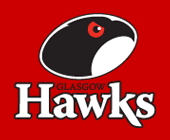|
THE HERALD REPORTS
McKie’s vision of future deserves clubs’ best efforts
KEVIN FERRIE December 04 2007
Opponents of the SRU would have smirked at the Stalinist ring to the introduction of a five-year-plan for the development of the game at Murrayfield yesterday, while officials had to admit that the track record for such initiatives is none too impressive.
Gordon McKie, lead architect of this vision of the way forward, acknowledged plenty of good intent behind both the Mackay Review undertaken in 1999 and the Genesis Report, which was supposed to have been implemented three years ago, but that these had been among many plans that were not implemented properly because of the sport's struggles to come to terms with the transition to professionalism. He is the latest of many who have sought to put old arguments behind them and he attempted to draw a line under them once and for all in offering an assurance that professional teams are here to stay.
"The notion that the professional game is going to be shut and we can go back to clubs is just not going to happen," the chief executive said firmly.
advertisementIn confirming that he expects to be able to move Edinburgh out of Murrayfield to a more suitable venue by the start of next season, if not the end of this one, he also laughed off weekend newspaper claims that they might be moved to the Borders.
Yet there was a deeply serious point to that because, as McKie also observed, it is those who cannot let their personal agendas go who are making it difficult for the sport to move forward by constantly, perhaps even maliciously, depicting a negative image of a sport in crisis.
The reality is very different, with the profit and loss account back under control and options emerging on ways of reducing what is a substantial but, in relation to the SRU's assets, by no means unmanageable debt. Most importantly of all there is at last a real sense of sure-handed leadership that means a five-year-plan can be proposed with some degree of credibility.
While the elite end of the sport attracted most of yesterday's attention, then, the most important work is being done at grassroots. On the face of it, getting back to the playing numbers of the late '70s and early '80s may not sound that difficult to achieve but it actually requires well in excess of a one-third increase over the next five years.
It is a measure of just how much the sport had shrunk over a quarter of a century or so that this work begins from a base that in itself is substantially higher than it was a few years ago. Some gloom-mongers at high-profile clubs may continue to bleat about lack of support but the vast majority of clubs at all levels understand their role.
The only bad news for those who have knuckled down - and it should hardly dishearten those who want the sport in general or indeed their own clubs to thrive - is that they have set standards that have led to even greater ambition being outlined, with Colin Thomson, the SRU's head of community rugby, stating his belief that what they are aiming for is achievable.
"What the figures mean is that if each club currently playing the game can raise an additional 14 players each year in senior or in local schools or mini-sections and retain them then we will hit our target," he said. "This may be difficult in some areas that have already shown dramatic growth in recent years, however it's critically important we target areas to expand our numbers."
He added that in order to do so it was also crucial to increase hugely the number of referees, qualified coaches and, most important of all, volunteers to support the club game.
In broad terms the SRU has this right, but it needs to do more when allocating financial support to clubs. In particular it is important to remove any consideration of status when doing so, instead aligning money directly to playing numbers, so forcing clubs to prioritise increased membership, something that can be most sustainably achieved by setting up strong youth development structures which will produce a steady supply of players.
The targets outlined yesterday were commendable. The means of achieving them may need some tweaking, but it is now possible to believe that with the Scottish Rugby Board and Council fully supportive of the plans the administrative structure now has the capacity to implement them, which is in itself a breakthrough in Scottish Rugby's professional era.
This article was posted on 4-Dec-2007, 08:25 by Hugh Barrow.
|









